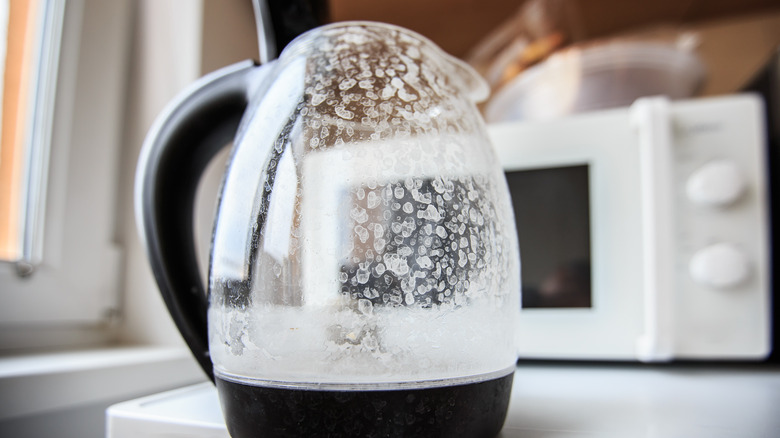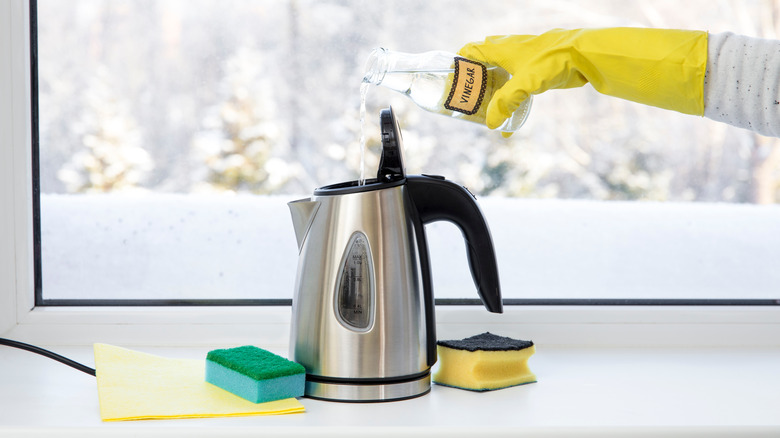Is It Necessary To Descale Your Kettle?
A kettle is a handy and convenient kitchen appliance, but can often go overlooked. While popular in Europe, the electric kettle hasn't quite caught on in America. According to Business Insider, the reason is that American homes have an average lower voltage than British homes. They write, "The lower voltage in the US means that electric kettles would not heat water as quickly as they do in the UK. As a result, they haven't caught on in the US."
However, if you have joined the bandwagon and gotten yourself a kettle, you're probably marveling at its convenience. Whether you use it for making late-night ramen, seeping an afternoon tea, or stirring into a mug of instant coffee, it's a great addition to your kitchen appliance lineup. But, be honest, when was the last time you cleaned your kettle? We all have ignored cleaning our kitchen appliances from time to time, but it may be best to check your kettle out for limescale buildup.
Limescale looks like a build-up of white deposits on your metal kettle, and it most likely occurs as a result of using hard water. The best way to remove this is by descaling. For those who don't know, descaling, "is a metal cleaning process that removes the buildup of limescale," according to The PrimaDonna Life. And, no, just rinsing it won't do the trick.
Yes, you should descale your kettle
The Architecture Designs notes that while this buildup is not detrimental to your health, removing it is important for your kettle's longevity. Some adverse effects of limescale buildup are reduced efficiency, corrosion, and burn-out. It is best to prevent these negative effects, but if you're glancing over at your filthy kettle right now, it's okay. It's an easy fix.
The best way to get rid of this is to descale your kettle. You will need to use an acidic base, like lemon juice or vinegar, to effectively remove limescale. The Architecture Designs suggests using a dilution of 1:1 water to vinegar. It can be poured into your kettle and left for around an hour. After sitting, you should boil the mixture in the kettle. Leave the solution for around one hour and then boil it in the kettle. Afterward, rinse and dry your kettle. This should completely get rid of the build-up, but if not you can repeat the process.
However, limescale buildup should be prevented. Good Housekeeping suggests using a kettle protector. Kettle protectors are stainless-steel wire balls, "which attract deposits away from the base and sides." They can be rinsed each month to prevent buildup.
Now, go forth and clean your nasty kettles.

